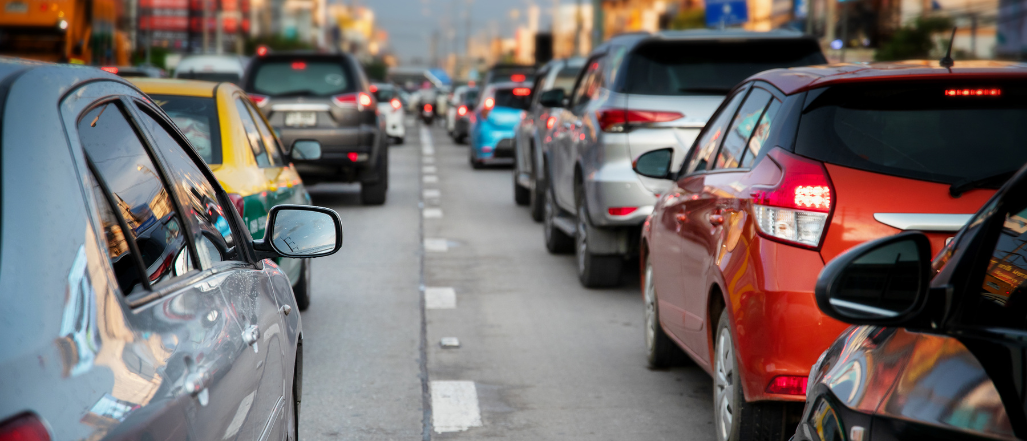Who among us hasn’t gotten frustrated behind the wheel?
Unless you’ve mastered the art of zen, it’s hard not to get a little annoyed when someone cuts you off, doesn’t know how to merge, runs a red light, or doesn’t use their turn signal.
It’s no wonder that road rage incidents and aggressive driving are rising — but it’s also the responsibility of each one of us to turn the temperature down and drive safely.
If you’ve ever considered retaliating in some form to the bad driving of others, consider this: Aggressive driving and road rage impact how much you pay for car insurance.

Defining the Terms
There’s a difference between aggressive driving and what is commonly known as “road rage.” While different jurisdictions have precise definitions they use when prosecuting cases, aggressive driving is a traffic offense, while road rage is criminal assault.
Simply put: Aggressive driving can lead to road rage, but road rage is not present in every case of aggressive driving.
It’s a nuanced, but important distinction. Aggressive driving is reckless and doesn’t take the safety of others into consideration. Road rage is acting with the intent to cause harm to others. One is careless, the other is violent. One is a misdemeanor driving violation, the other is considered criminal behavior.
Aggressive Driving and Insurance
Insurance companies base their rates on a complex combination of aspects, but a safe driving record is always a predominant and prevailing factor. Aggressive driving can lead to accidents. Because of this, a number of insurance companies exclude road rage and aggressive driving from coverage.
In other words, if you are driving in an unsafe manner and that results in a collision, an insurer will conclude that the crash was the result of risky behavior—not an accident. Since it’s considered an “intentional act,” the insurer won’t cover the costs of the collision.
If being financially responsible for the repairs resulting from an aggressive driving incident isn’t enough to deter reckless drivers, they should bear in mind that other penalties may be in play, too. Aggressive drivers may have points added to their driver’s licenses—or their licenses may be revoked altogether. At the very least, if you’re found to be at fault, your rates will go up. Or your insurer might drop you.
The increased use of telematics and driving apps means that much of the information an insurer needs to determine if you are driving safely is readily available. These devices record and transmit data like speed, hard braking, and more. Speeding is considered a form of aggressive driving, and it can have a significant impact on the rates you pay for insurance.
How Bad Is the Problem of Aggressive Driving and Road Rage?
Road rage is a dangerous issue that has become all too common. The National Highway Traffic Safety Administration (NHTSA) and the American Automobile Association (AAA) have issued reports that offer the following data points:
- A 2019 report from AAA found that nearly 80 percent of drivers “expressed significant anger, aggression or road rage,” at least once in the month prior.
- Aggressive driving actions—such as tailgating, illegal passing, and “erratic” lane changing—have been found to be factors in up to 56% of fatal crashes.
- One AAA study examined 10,000 road-rage incidents during a seven-year period and found they resulted in more than 12,000 injuries and 218 murders.
The following aggressive driving behaviors are common. Millions of drivers engage in:
- Switching lanes quickly or too close to another vehicle (26% of drivers)
- Rude gestures or honking (32% of drivers)
- Exceeding freeway speed limits by 15 mph or more (48% of drivers)
- Driving through a red light (31% of drivers)
- Preventing a car from merging in front by speeding up (34% of drivers)
- Passing too close, defined as less than a car length (22% of drivers)
How to Avoid Becoming a Victim of Aggressive Driving or Road Rage
With many angry and upset drivers on the streets, it’s important for your safety to remain calm and whenever possible adjust your driving to compensate.
Here are AAA’s three big tips on how to avoid a confrontation on the road:
- Don’t offend.
- Don’t engage.
- Adjust your attitude.
1. Don’t Offend
The majority of studies, questionnaires, and surveys turn up very similar responses as to what irritates drivers most: cutting people off, driving slowly in the passing (left) lane, tailgating, and making obscene gestures are behaviors that are bound to set off fellow drivers.
One of the most impactful ways to protect yourself is by simply being a safe and courteous driver. Here are a few strategies:
- When merging, provide plenty of room and use your turn signal.
- If you are in the left-hand lane, pay attention to the cars around and behind you and get over if someone wants to pass.
- Remember that in some states it’s the law to use the left lane for passing only.
- Don’t follow other cars too closely. Again, a big part of this is just paying attention; be mindful of speed limit changes, for example.
- If the car in front of you is driving slowly, give them more room, not less. That way, if that driver does something unexpected, you’ll have time to react instead of hitting them from behind.
- Obscene gestures make other drivers incredibly angry. Even things like waving hands or shaking your head can enrage an angry driver. No matter how tempting it is to gesture, keep your hands on the steering wheel and take a deep breath.
- Distracted driving can lead to mistakes that you don’t even realize you’re making. Your number one job when you’re behind the wheel is to drive safely—so put away the phone, don’t text, and reduce or eliminate distractions.
2. Don’t Engage
This is possibly the most important tip for your physical safety. For some people, the temptation to “correct” an aggressive driver’s behavior is considerable, but do not give in. If you’ve done something dumb—like inadvertently cutting someone off—immediately try to signify an apology by using an appropriate gesture.
If that doesn’t work and you’ve angered someone who appears intent on picking a fight, it’s up to you to cool things down. Drop back and give them plenty of room. Try and get away as quickly and as safely as possible.
If the other driver appears to be following you, do not pull over and get out of your car. Seek help if you feel as though you’re in danger by calling the police if you have a cell phone, or by driving to a public place where there are people around. Again, do not get out of your car. Instead, tap the horn or yell for help to attract attention.
3. Adjust Your Attitude
Of the three tips from AAA, the third might be the most difficult, because it requires us to take stock of our own response and choose the high road. This means if you are on the receiving end of some bad driving—if someone cuts you off, or doesn’t let you merge—it’s up to you to govern how you react.
AAA reminds us that driving is not a contest. Heading out on a road trip determined to “beat” your previous time is setting yourself up for the mindset that can lead to aggressive driving. There are bound to be things on the journey that are beyond your control, whether it’s road construction, an accident, or bad weather. As your record time slips away, frustration can seep in, leading to poor judgment. It’s best not to even start the trip intent on making better time.
Be patient and forgiving of other drivers. If you see someone driving too fast or switching lanes to get ahead of traffic, AAA suggests thinking of reasons why someone might be driving like this and giving them the benefit of the doubt. Maybe the other driver is a physician trying to get to a hospital for an emergency.
Finally, it’s worth taking a moment for some introspection. If you see yourself in any of the behaviors mentioned above, please consider getting help. Anger management, stress reduction, and time management coaching are widely available.

The Bottom Line
Aggressive driving and road rage are different but related behaviors that are increasingly responsible for injuries and deaths across the country. Insurers are taking note, and many policies now exclude coverage for accidents caused by aggressive driving.
Drivers can contribute to safer roads by being courteous drivers, not reacting to aggressive drivers, and by adjusting their attitudes.
Disclaimer:
All information provided in this publication is for informational and educational purposes only, and in no way is any of the content contained herein to be construed as financial, investment or legal advice, or instruction. Rate Insurance does not guarantee the quality, accuracy, completeness, or timelines of the information in this publication. While efforts are made to verify the information provided, the information should not be assumed to be error free. Some information in the publication may have been provided by third parties and has not necessarily been verified by Rate Insurance. Rate Insurance, its affiliates, and subsidiaries do not assume any liability for the information contained herein, be it direct, indirect, consequential, special, or exemplary, or other damages whatsoever and howsoever caused, arising out of or in connection with the use of this publication or in reliance on the information, including any personal or pecuniary loss, whether the action is in contract, tort (including negligence) or other tortious action.

